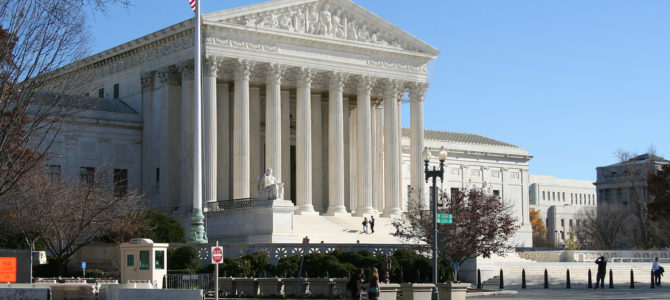
In an otherwise obscure case about veterans’ benefits, the Supreme Court on Wednesday took its first step in pushing back against the overweening administrative state that, at a time Congress isn’t legislating much, creates most of the law by which Americans live our daily lives.
In Kisor v. Willkie, the court was asked to decide how much judges should defer to bureaucrats who re-interpret their own regulations. It didn’t overturn that “Auer deference,” but it limited it in significant ways: All nine justices agreed that courts need to ensure that a regulation truly is ambiguous before giving the agency re-interpreting it any sort of leeway. (If a regulation isn’t ambiguous, then there’s no reinterpretation possible.)
In other words, the Supreme Court limited the types of cases where judges defer to agencies, while setting standards for evaluating those cases that boil down to “when the agency is correct and employs special expertise, having considered the reliance interests of those being regulated” rather than just making legal or political judgment calls willy-nilly. So Auer deference technically survives, but this new rule sounds an awful lot like reining in the administrative state! (Full disclosure: I filed a brief for the Cato Institute, joined by superstar law professors Jonathan Adler, Richard Epstein, and Michael McConnell, arguing for Auer’s overruling.)
At first blush, Justice Neil Gorsuch’s magisterial opinion (joined by three colleagues) that concurred only in the judgment—which remanded the case so a lower court can scrutinize the clarity of the regulation at issue—reads like a dissent. This conservative quartet would’ve thrown out Auer altogether, but now is left to complain that the majority “maimed and enfeebled—in truth, zombified” Auer deference. Keeping it “on life support” deprives the lower courts of clarity and litigants of the independent judicial decisions that the Constitution guarantees.
But Chief Justice John Roberts—who joined the majority opinion, but only on stare decisis grounds (there weren’t five votes to sustain Auer on its own terms!)—echoed by Justice Brett Kavanaugh, who joined Gorsuch’s concurrence, explains that in practice the distance between the two positions isn’t all that great.
Roberts characterizes Justice Elena Kagan’s standard for granting deference as follows: “The underlying regulation must be genuinely ambiguous; the agency’s interpretation must be reasonable and must reflect its authoritative, expertise-based, and fair and considered judgment; and the agency must take account of reliance interests and avoid unfair surprise.” Meanwhile, he sees Gorsuch’s view of when courts can be persuaded by an agency rationale thus: “The agency thoroughly considered the problem, offered a valid rationale, brought its expertise to bear, and interpreted the regulation in a manner consistent with earlier and later pronouncements.”
In other words, Roberts concludes, the majority has so limited Auer that “cases in which Auer deference is warranted largely overlap with cases in which it would be unreasonable for a court not to be persuaded by an agency’s interpretation of its own regulation.” Kisor itself illustrates that point, with all justices telling the lower court to better vet what the agency did.
So what do we know about the new Auer deference? First, courts shouldn’t defer until they’ve exhausted the “traditional tools” of statutory interpretation and still find a regulation ambiguous. Second, courts should defer only after making “independent inquiry into whether the character and context of the agency interpretation entitles it to controlling weight.” Deference is kosher only if certain “important markers” are there: the interpretation must be the agency’s official position, within its substantive expertise, and fair and considered.
Or, as Kavanaugh put it in his own separate concurrence (joined by Justice Samuel Alito), if a court exhausts all the “traditional tools of construction” before concluding that a regulation is ambiguous and thus invoking Auer, it will “almost always reach a conclusion about the best interpretation of the reg at issue.” Have no fear, because courts “will have no reason or basis to put a thumb on the scale in favor of an agency.”
At bottom, Kavanaugh makes the perfect analogy to sum up the unanimous Supreme Court’s position: “Umpires in games at Wrigley Field do not defer to the Cubs manager’s in-game interpretation of Wrigley’s ground rules.” Executive agencies are on notice that it’s no longer “anything goes” when they rewrite their own rules, that judges will hold their feet to the statutory fire.
Call it Antonin Scalia’s revenge, because the late justice, having authored Auer back in 1997, came around to the view that he was wrong—and that in any event courts need to work harder to avoid finding ambiguity in both statutes and regulations such that deference doctrines come into play. Or call it Kisor deference; while Kisor didn’t overturn Auer, it’s definitely a jurisprudential shift. And that’s a pretty good start to curbing the administrative state.









